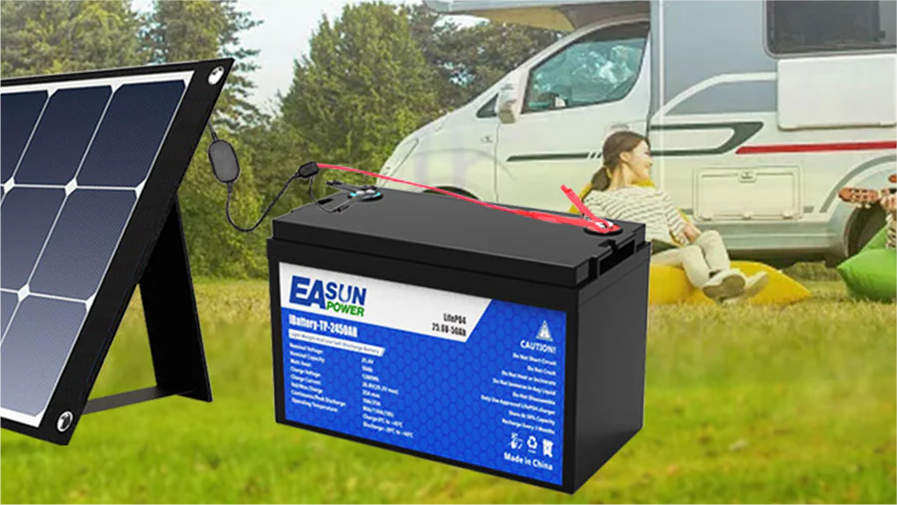
So entsorgen und recyceln Sie LiFePO4-Batterien
LiFePO4-Batterien, die für ihre Stabilität und Langlebigkeit bekannt sind, werden immer häufiger in verschiedenen elektronischen Geräten und Elektrofahrzeugen eingesetzt. Ihre Entsorgung stellt jedoch aufgrund des Vorhandenseins gefährlicher Stoffe besondere Herausforderungen dar. Eine ordnungsgemäße Bewertung, Recyclingpraktiken und die Einhaltung der Herstellerrichtlinien sind unerlässlich, um sicherzustellen, dass diese Batterien sicher und nachhaltig gehandhabt werden. Dieser Artikel beschreibt wirksame Strategien zur Entsorgung und zum Recycling von LiFePO4-Batterien und hebt die Rolle von Herstellern, Verbrauchern und Recyclingzentren bei der Minimierung der Umweltbelastung hervor.
Batteriebewertung
Vor der Entsorgung einer LiFePO4-Batterie ist eine gründliche Bewertung ihres physikalischen Zustands und der Verwendung der LiFePO4-Batterie von entscheidender Bedeutung, um die geeigneten Entsorgungsmaßnahmen zu bestimmen. Wenn die Batterie Anzeichen von Schäden wie Risse oder Beulen aufweist oder wenn es Anzeichen für Leckagen oder Schwellungen gibt, sind dies starke Anzeichen für interne Fehler und potenzielle Gefahren. Solche Batterien sollten mit äußerster Vorsicht behandelt werden. Um Risiken während des Transports zu mindern, ist es ratsam, einen nicht leitenden und robusten Behälter zu verwenden, der auslaufsicher ist. Dieser Behälter sollte idealerweise aus einem Material bestehen, das nicht mit dem Batterieinhalt reagiert, wie etwa Kunststoff oder beschichtetes Glas, und in der Lage sein, ausgelaufenes Material aufzunehmen. Es ist unbedingt zu vermeiden, Metallbehälter zu verwenden, da diese einen leitfähigen Pfad bilden können, der zu einem Kurzschluss oder sogar einem Brand führen kann. Die ordnungsgemäße Handhabung und Eindämmung sind unerlässlich, um Unfälle zu verhindern, Abfallentsorger zu schützen und sicherzustellen, dass die Batterie während des Transports zu einer Recyclinganlage keine schädlichen Substanzen in die Umwelt abgibt.

Prüfen Sie die Richtlinien des Herstellers
Lesen Sie vor der Entsorgung der Batterie die Entsorgungsrichtlinien des Batterieherstellers . Viele Hersteller legen spezielle Protokolle für ihre Produkte fest, die die Rückgabe der Batterie an den Verkäufer oder an eine bestimmte Sammelstelle beinhalten können. Solche Rücknahmeprogramme fallen in die Verantwortung des Herstellers gemäß Umweltgesetzen wie der EU-Richtlinie über Elektro- und Elektronik-Altgeräte und der Batterie-Richtlinie . Die Befolgung dieser Richtlinien trägt dazu bei, dass die Batterie so verarbeitet wird, dass die Materialrückgewinnung maximiert und die Umweltschäden minimiert werden. In einigen Fällen bieten Hersteller finanzielle Anreize oder eine kostenlose Rücksendung an, um die Einhaltung ihrer Recyclingprogramme zu fördern. Die Einhaltung der Vorschriften trägt nicht nur zu einem verantwortungsvollen Umgang mit der Umwelt bei, sondern entspricht auch den gesetzlichen Anforderungen und hilft, mögliche Bußgelder oder rechtliche Probleme im Zusammenhang mit unsachgemäßer Entsorgung zu vermeiden.
Suchen Sie ein Recycling-Center
Ressourcen wie das Green Directory bieten eine umfassende Liste von Einrichtungen, die für die Handhabung dieser Batterietypen ausgestattet sind. Diese Zentren halten sich an strenge Sicherheitsprotokolle, um versehentliche Entladungen oder Brände während des Batteriedemontageprozesses zu verhindern. Sie sind so ausgestattet, dass sie wertvolle Materialien wie Lithium und Eisen trennen und zurückgewinnen können, die in verschiedenen industriellen Anwendungen wiederverwendet werden, wodurch die Notwendigkeit der Gewinnung neuer Rohstoffe verringert wird. Darüber hinaus sind diese Einrichtungen für die Handhabung der potenziell gefährlichen Komponenten von Batterien wie Elektrolyte und andere reaktive Materialien ausgelegt und stellen sicher, dass diese Substanzen weder Boden noch Wasser verunreinigen. Bei der Auswahl eines Recyclingzentrums ist es wichtig zu überprüfen, ob es die geltenden lokalen und EU-Vorschriften einhält, die die Handhabung und Verarbeitung von Elektroschrott regeln, um sowohl die menschliche Gesundheit als auch die Umwelt zu schützen.

Rücknahmeprogramme für Einzelhändler
Viele Einzelhändler, insbesondere solche, die elektronische Waren verkaufen, bieten Rücknahmeprogramme für LiFePO4-Batterien an. Diese Programme sind nicht nur praktisch, sondern stellen auch sicher, dass die Batterien unter Einhaltung der Umweltstandards recycelt werden. Die Teilnahme an Rücknahmeprogrammen von Einzelhändlern ist für Verbraucher oft der einfachste Weg, Batterien zu recyceln, da sie sich nicht um geeignete Entsorgungsmöglichkeiten kümmern müssen. Einzelhändler arbeiten in der Regel mit zertifizierten Recyclern zusammen, um die gesammelten Batterien abzuwickeln. Dies trägt zur Rationalisierung des Recyclingprozesses bei und garantiert, dass die Batterien sicher entsorgt werden. Für Verbraucher ist es so einfach wie die Rückgabe der gebrauchten Batterie an der Verkaufsstelle oder einer dafür vorgesehenen Abgabestelle. Dieser Ansatz unterstützt auch die Kreislaufwirtschaft, fördert die Rückgewinnung und Wiederverwendung wertvoller Materialien und reduziert gleichzeitig den ökologischen Fußabdruck, der mit der Entsorgung von Elektroschrott verbunden ist.
Zusammenfassung
Die ordnungsgemäße Entsorgung und das Recycling von LiFePO4-Batterien sind für den Umweltschutz und die Ressourcenerhaltung von entscheidender Bedeutung. Durch die Befolgung gründlicher Bewertungsprotokolle, die Einhaltung der Herstellerrichtlinien, die Nutzung ausgewiesener Recyclingzentren und die Teilnahme an Rücknahmeprogrammen der Einzelhändler können Verbraucher sicherstellen, dass diese Batterien verantwortungsbewusst recycelt werden. Solche Praktiken verhindern nicht nur Umweltschäden, sondern unterstützen auch die Kreislaufwirtschaft, indem wertvolle Materialien zurückgewonnen und die Gewinnung neuer Rohstoffe reduziert wird. Durch gemeinsame Anstrengungen und verantwortungsvolles Handeln können wir den ökologischen Fußabdruck dieser wesentlichen Komponenten erheblich verringern.

Einen Kommentar hinterlassen